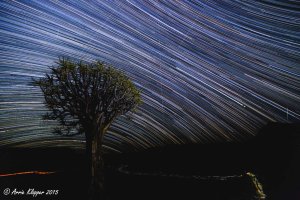Planning a trip to do some astrophotography during next month's Geminids meteor shower, peak 14 December. The great advantage this year is that the peak period is a few days after the new moon, thus no moonlight to obscure the 2015 Geminid shower!
So what is important!
Location:
Open sky, scenic landscape, no/min light pollution. Hope to have this one coved.
Equipment:
Canon 6D
Ronkinon 14mm f2.8
Tripod and remote control (TC-80 N3).
Technical know how, this is where I need help!
ISO 3200-6400, f 2.8, time max 30-35 sec to ensure that on each photo the stars do not show any movement.
Shoot as many as possible, always in RAW. This will hopefully mean that you capture meteorites on some of the photos.
Seems that a minimum of 2 hours is needed to later compile star-trails.
Photograph scene already at twilight.
Focus on stars and not the foreground?
Spare batteries and cards.
What am I not thinking off, any other tips and suggestions?
Thanks!
So what is important!
Location:
Open sky, scenic landscape, no/min light pollution. Hope to have this one coved.
Equipment:
Canon 6D
Ronkinon 14mm f2.8
Tripod and remote control (TC-80 N3).
Technical know how, this is where I need help!
ISO 3200-6400, f 2.8, time max 30-35 sec to ensure that on each photo the stars do not show any movement.
Shoot as many as possible, always in RAW. This will hopefully mean that you capture meteorites on some of the photos.
Seems that a minimum of 2 hours is needed to later compile star-trails.
Photograph scene already at twilight.
Focus on stars and not the foreground?
Spare batteries and cards.
What am I not thinking off, any other tips and suggestions?
Thanks!

